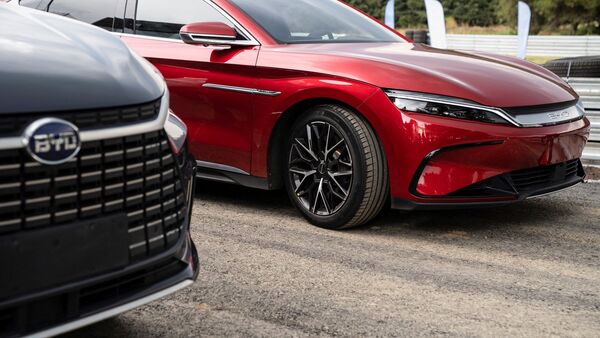
Chinese government continues EV subsidies amid supply gap. Here’s why
By Sumaiya | Published | No Comments
China may produce 40 million vehicles annually but only sell 22 million. However, China still supports the growth of the industry, posing challenges for players
…

Like other industries, the automotive sector is based on the basic principle of supply and demand. This enables companies to allocate resources efficiently, thereby minimizing losses. However, China’s automotive sector stands at a crossroads, grappling with overcapacity issues as it eyes expansion into global markets. With production capacity outstripping consumer demand, the industry faces significant challenges and opportunities in equal measure.
Despite having the capacity to produce approximately 40 million vehicles annually, Chinese consumers buy only 22 million cars per year. The disparity underscores the overcapacity dilemma for the nation’s automakers. Still, the Chinese government remains steadfast in its support for industry growth, which presents a conundrum for both established players and pioneers of new technologies.
The proliferation of production lines geared toward conventional internal combustion vehicles exacerbates the overcapacity problem. As consumer preferences shift toward new-energy vehicles such as electric vehicles (EVs) and plug-in hybrid electric vehicles (PHEVs), manufacturers find themselves at a crossroads. While these new-age vehicles hold the promise of absorbing excess capacity, broader economic uncertainties dampen their potential impact.
Also Read: Why Global Brands Are Fearing Chinese EV Revolution Worldwide
Despite the challenges, the EV market in China is booming, with 123 brands offering at least one electric model. This surge in offerings has fueled a fierce price war as manufacturers vie for consumer attention in a crowded market. In addition, Chinese automakers are aggressively seeking new export markets, with auto exports to Russia quintupling between 2020 and 2023.
Chinese automakers’ global expansion ambitions, particularly in the EV segment, have raised eyebrows among Western competitors and governments. Concerns about market saturation, unfair competition, and the impact on domestic production have fueled debates around tariffs and trade measures. The US is considering tariff expansion to protect its auto industry, while the European Union investigates China’s EV subsidies.
The question arises: Why is China subsidizing an industry struggling with overcapacity? The answer lies in the government’s strategic objectives to promote domestic automakers on the global stage, stimulate economic growth and safeguard employment. Despite facing profitability challenges, government support enables automakers to maintain production levels, with only a handful of companies achieving the 400,000 vehicle sales threshold required for profitability.
While some Chinese officials advocate industry consolidation to address overcapacity, a prevailing expansionist mindset currently prevails. The government’s unwavering support underscores its commitment to position China as a dominant player in the global automotive landscape, navigating the challenges and opportunities on the road to success.
Date of first publication: 05 May 2024, 10:40 AM IST
| Denial of responsibility! Thelocalreport.in is an automatic aggregator around the global media. All the content are available free on Internet. We have just arranged it in one platform for educational purpose only. In each content, the hyperlink to the primary source is specified. All trademarks belong to their rightful owners, all materials to their authors. If you are the owner of the content and do not want us to publish your materials on our website, please contact us.The content will be deleted within 24 hours. |





